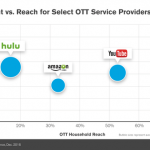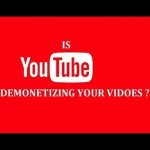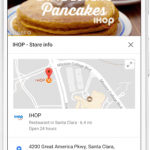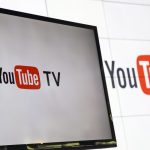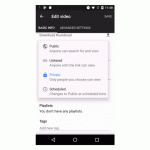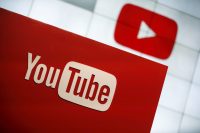Why YouTube’s Demonetization Policy Should Matter To Advertisers
Why YouTube’s Demonetization Policy Should Matter To Advertisers
by Haley Robinson , Op-Ed Contributor, December 4, 2017
YouTube is a fascinating online community. Its user base comprises hundreds of subcultures and niche audiences tied together by a love of online video content—and the people who create it. Like all social networks, YouTube couldn’t survive without its creators and vice-versa. But in the past few years, the platform has struggled to keep creators happy, instead catering its services more to big brands and mainstream entertainment companies (you know, the ones with the money). This shift is causing an interesting—and potentially devastating—problem for advertisers.
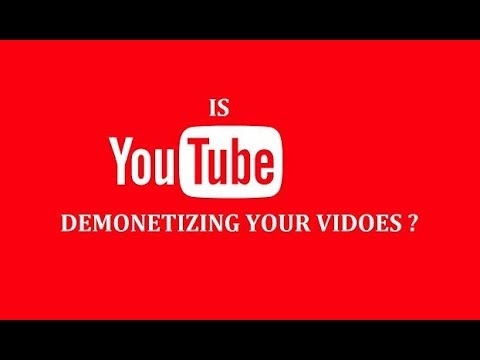
First, let’s recap the current YouTube climate. For the past year, YouTube has been scrambling to clean up its ad policy to entice big brands to resume advertising there after it was discovered that some branded content was appearing alongside videos with unseemly, hateful or extremist themes. Through this clean-up and “transparency” about ad-friendly content, many videos on independent channels became demonetized, causing advertising revenues to tank and inciting anger among creators. A simple search for “demonetized videos” on YouTube will yield a slew of frustrated voices calling for justice.
The tension between platform and creators heated up even more in October when YouTube demonetized the video of one of its golden boys, Casey Niestat, for including subject matter that was apparently against its new ad policy, but failed to demonetize a video with identical subject matter on the channel of a popular late-night television show. Niestat posted a video calling out YouTube for its double standard and within hours, it was all over the news. YouTube claims to be fixing its algorithm, but that will not fully address the real problem: that YouTube is failing to equally balance its relationship with brands and creators.
Demonetization Affects Brands More Than They Realize
Brands should pay attention for two reasons. First, YouTube’s creators are valuable to both the platform and the brands that advertise on it. The only reason brands have the opportunity to advertise on YouTube is because creators have made it the amazing, engaging space it is today. If YouTube continues to censor and aggressively demonetize content on independent channels, it could sever brands’ access to the unique, thriving, passionate communities that creators have developed.
Conversely, if big brands choose to advertise only on mainstream content (as many have opted to do in the aftermath of “adpocalypse“), they will prevent themselves from accessing these rich, engaging communities. Without access to these niche audiences, the value and relevance of advertising on YouTube will significantly decrease. Furthermore, if YouTube continues to anger and upset creators, they can move on to another platform or revenue source (like Patreon) and take their audiences with them. Remove the audience, and you remove the feature advertisers are really paying for: engaged eyes ready to view content.
Second, YouTube’s inability to appease (or simply listen to) creators suggests that its system is biased. Sure, as advertisers it’s nice that YouTube treats us well. We expect to get perks and favors in return for our ad dollars. But this growing disquiet in the hearts of creators, especially the Casey Niestat case, shows a more dangerous bias that could negatively impact advertisers. Philip DeFranco, another top YouTube creator, brought this up in his video response to the demonetization crisis. You see, if YouTube has a special relationship with big-money pages, in that it favors them over smaller, more independent channels, it calls to question other YouTube practices.
- How much does money affect the platform’s algorithm?
- If there are loopholes in the filter, does it really work?
- Take the trending section of the platform, for example. It’s easy to find videos by brand channels or mainstream entertainment companies on the trending list, even if they have yet to breach 100,000 views; however, many videos made by everyday creator pages that rake in millions of views in a few days do not rank.
- This means advertisers who focus their dollars on or base ideas around trending content, could actually be using inaccurate or skewed data. That could have major ramifications for a campaign.
The relationship between YouTube and creators will always be a precarious one; after all, you can’t please everyone all of the time.
While YouTube claims to be working on a solution, I believe the problem isn’t the algorithm, it’s YouTube’s (and advertisers’) priorities. Unless the balance shifts to treat creators and big names equally, our industry will most certainly feel the sting. Instead of enjoying the YouTube bias, I think advertisers should recognize the value of creators’ place in the YouTube universe and champion their cause. Shift your ad dollars to more niche channels and avenues to show your support … and gain the respect of the YouTube community again. They may not be able to offer you ad perks and favors, but they most certainly can bring you loyalty and engagement.
MediaPost.com: Search Marketing Daily
(52)


